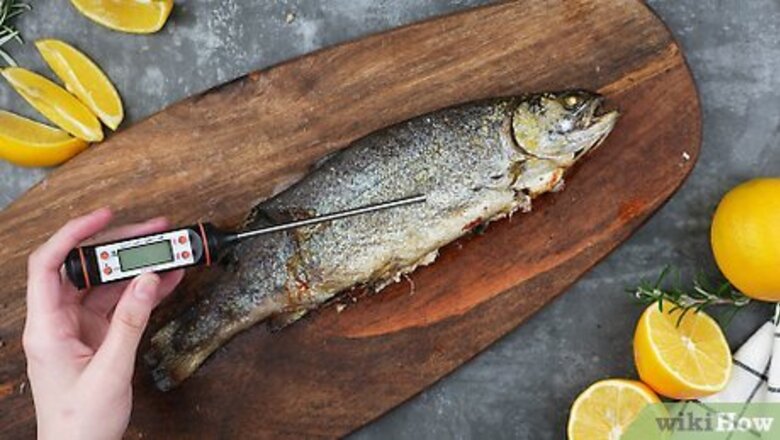
views
Use an instant-read thermometer for the most accuracy.
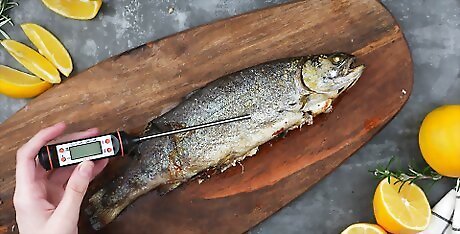
Check for a temp of 145 °F (63 °C). Gently insert an instant-read, a.k.a. a meat thermometer, into the thickest part of the fish. If the internal temperature is 145 °F (63 °C), then it’s done cooking.
Cut the fish with a knife to see if it’s opaque.
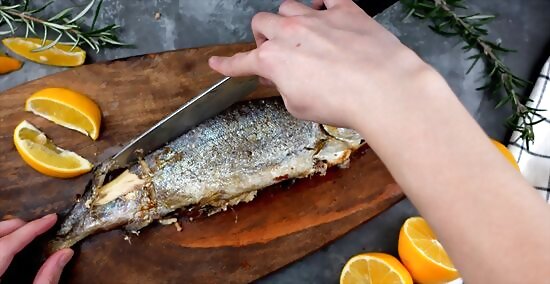
Use the tip of a small knife to take a peek inside. When you first start cooking the fish, it’ll have a shiny, translucent color and appearance. As it cooks, the fish will change both texture and color. It’ll become more opaque, meaning it won’t be see-through. Stick the tip of a sharp knife into the thickest part of the fish. If it’s opaque all the way through the meat, then it’s finished cooking and ready to eat. Fish like cod and mackerel will be white all the way through. Other fish that have a deeper color, such as tuna or salmon, will be opaque and won’t look translucent when they're done.
Twist the meat with a fork to see if it flakes.
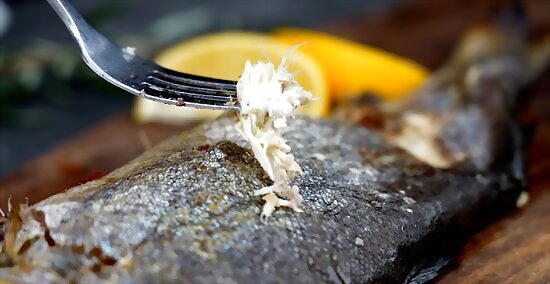
Fully cooked fish will flake easily. Stick the tines of a clean fork into the thickest section of the fish at a 45-degree angle. Gently twist the fork and check to see if the meat is flaky and opaque. If it is, then you’re good to go! Try not to shred the fillet. A simple flake test should be enough. Some fish, like salmon and tuna, may not flake as easily as white fish like cod. But they’ll be fully opaque when they’re finished.
Stick a cake tester in the thickest part to see if it’s warm.
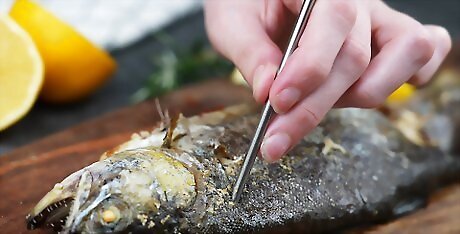
Use this restaurant secret to avoid destroying a delicate fillet. A cake tester is a specially designed pastry tool used to check if a cake is done baking. Slide the thin metal rod onto the thickest part of the fish and hold it there for 3 seconds. Then, remove it and touch the tip of the cake tester to the skin under your bottom lip. If it’s warm, then the fish is cooked all the way through. This is a great trick for super delicate fish, such as flounder, which may fall apart if you use a fork to check it.
Check the skin for a crispy texture.
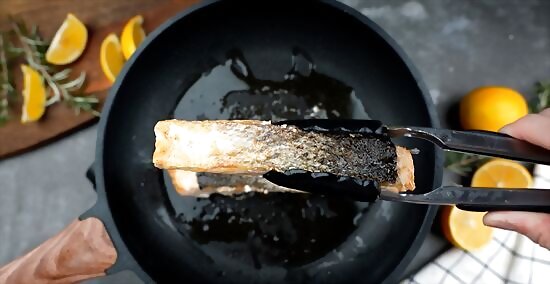
If it’s crispy, it’s done. Fish with the skin on should always be cooked skin-side down first so it crisps up. Take a spatula and lift the fish to check the skin. If it’s firm and crispy, it should be finished cooking, especially if it’s a thin fillet.
Press down on salmon fillets to see if the meat separates.

Cook perfect medium salmon with this simple test. Salmon is at its juiciest when it’s cooked to a medium temperature rather than a fully well-done, which can be dry and chalky. Take a fork or use your finger to gently press down on the top of the salmon fillet. If the flesh separates easily along the white lines that run across it, then it’s ready to go.
Look for a white substance if you're cooking salmon.
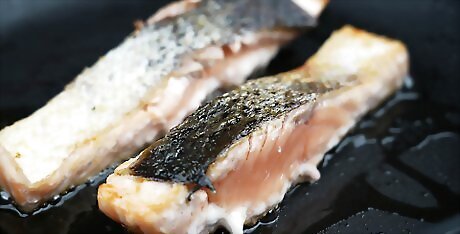
You may see something called albumin, which is a white substance that appears when a fish like salmon is cooked. Albumin is a sign that the fish is done cooking. Some fish, like cod or trout, won’t have albumin.
Cook fish for 10 minutes per 1 inch (2.5 cm).
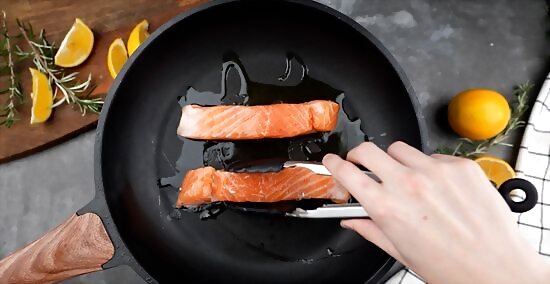
Follow this simple rule of thumb to avoid undercooking. Measure the thickest part of the fish. Calculate 10 minutes of cooking time for every 1 inch (2.5 cm) of thickness. Cook each side for half of the total time so it’s evenly cooked. For instance, if you have a fillet that’s 1 inch (2.5 cm) thick, cook it for 5 minutes on each side.
Cook fish that isn't done for another minute.
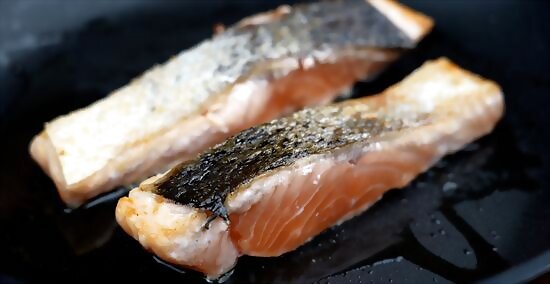
Fish is delicate and can easily overcook. If you check it and it isn’t quite ready, don’t cook it for too much longer before you check it again. Wait another minute or so and then see if it’s finished.
Avoid cooking the fish until it's hard.
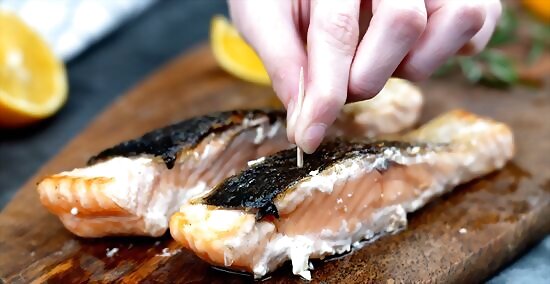
Hard fish is overcooked. Use a toothpick or a metal skewer and insert it into the fillet. If it doesn’t easily slide through the fillet, then it isn’t finished cooking. If it’s hard, it may be overcooked.

















Comments
0 comment